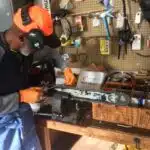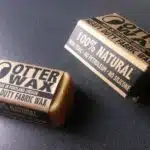Tire swings have been a fun and timeless activity for children of all ages. They are a great way to get outdoors, exercise and enjoy nature. Making a tire swing is also an excellent DIY project that anyone can accomplish with the right tools and instructions. In this article, I will guide you through the process of creating your own tire swing in nine easy steps.
Before we dive into the steps, it’s important to note that making a tire swing requires some basic knowledge of carpentry and safety precautions. It’s essential to follow each step closely and use caution when using power tools or working with heavy materials. With that said, let’s begin our journey on how to make a tire swing that will provide hours of entertainment and joy for your family and friends!
Choosing The Right Tire
Did you know that over 300 million tires are discarded in the US each year? That’s a staggering amount of rubber waste. However, repurposing old tires into fun and functional objects like tire swings can help reduce this number. Before beginning your DIY tire swing project, it is important to choose the right tire.
When it comes to selecting a tire for your swing, there are a few things you should consider. First, think about the type of tire you want to use. There are two main types: bias-ply and radial. Bias-ply tires are made with layers of fabric crisscrossed at angles, while radial tires have plies that run perpendicular to the tread. Radial tires tend to be more durable and flexible, making them better suited for tire swings.
Another factor to take into account is environmental considerations. Tires can release harmful chemicals when exposed to heat and sunlight, so it’s best to avoid using tires that have been sitting outside for an extended period of time. Additionally, some states have regulations regarding the disposal of tires or require them to be recycled in certain ways. By choosing an appropriate tire and considering the environment, you’ll not only have a safe and enjoyable backyard addition but also contribute positively to reducing waste.
Preparing The Tire
1.Gathering Materials: To build a tire swing, you will need a tire, two lengths of strong rope, and a drill. 2.Preparing the Tire: The tire should be cleaned of dirt and debris, and any sharp objects should be removed. 3.Preparing the Tire: The rope should be measured and cut to size, and holes should be drilled in the tire for the rope. 4.Preparing the Tire: The rope should be threaded through the holes and tied securely to the tire to ensure the swing is safe and secure.
Gathering Materials
To begin preparing your tire for a DIY tire swing, the first step is to gather all the necessary materials. Luckily, many of these items can be found around your home or at local hardware stores. Where to find these materials will depend on what you already have and what needs to be purchased. For example, you may be able to salvage an old tire from a junkyard or ask a neighbor if they have one they are looking to dispose of. Additionally, you can purchase rope and other hardware at a nearby hardware store.
Creating a cost-effective DIY tire swing requires careful consideration of all the necessary materials. When deciding where to acquire these materials, it is important to weigh the costs associated with each option. Salvaging an old tire may be free but could require more time and effort than purchasing one new from a retailer. Similarly, buying rope and other hardware in bulk may save money in the long run but requires an upfront investment.
Ultimately, gathering all the necessary materials for your DIY tire swing project is just one step in creating a fun and safe play area for children and adults alike. With careful planning and consideration of cost-effective options, anyone can create their own unique tire swing that will provide hours of entertainment for years to come.
Preparing The Tire
After gathering all the necessary materials, the next step in creating a DIY tire swing is to prepare the tire. Before attaching any ropes or hardware, it is important to ensure that the tire is clean and safe for use. One way to achieve this is by using appropriate painting techniques to give the tire a fresh coat of paint. This not only improves its appearance but also helps protect it from weather damage.
However, before painting the tire, there are several safety precautions that need to be taken. First, make sure that the tire is completely dry before applying any paint or coating. Wet or damp tires can cause paint to bubble and peel off over time. Additionally, if you plan on using spray paint, make sure to do so in a well-ventilated area and wear a mask or other protective gear to avoid inhaling harmful fumes.
Once the tire has been cleaned and painted, it is now ready for use as a DIY tire swing. With proper preparation and attention to safety precautions, anyone can create a fun and safe play area for both children and adults alike. Whether you choose to salvage an old tire or purchase one new from a retailer, taking the time to properly prepare it will ensure that your DIY project lasts for years of enjoyment.
Marking The Holes
After preparing the tire, it’s time to mark the holes. Marking the holes correctly is crucial in ensuring that the ropes are at equal distances from each other and that they have enough clearance from the ground. The first step in marking the holes is to identify where you want to hang your tire swing. Make sure that there is enough space for kids to play around without getting hurt.
Next, choose a point on the top of your tire for drilling the holes. You can use a measuring tape or ruler to find the center of your tire. Once you have found it, use a marker or chalk to make a small dot on that spot. After marking it, measure 10 inches down from this dot, and mark another spot with a marker or chalk. This second dot will be where you drill your first hole.
For marking the rest of the holes, repeat this process three more times around your tire at equal distances apart, making sure that all four dots are located equidistantly from each other on opposite sides of your tire. Once you have marked all four points with dots at equal distance apart, it’s time to move on to drilling.
To mark these holes accurately and uniformly, you will need some tools such as a measuring tape or ruler and a marker or chalk. These tools will help you create uniform markings around the circumference of your tire for drilling later on. With careful measurements and markings using these tools, you can ensure that your tire swing will hang evenly and safely.
Next up: drilling the holes for attaching ropes!
Drilling The Holes
To begin drilling the holes for your DIY tire swing, you’ll need a few tools. First and foremost, you’ll need a drill with a spade bit that is roughly the same diameter as your rope or chain. You’ll also need a sturdy ladder or step stool to safely reach the height needed to drill the holes. Finally, be sure to wear safety goggles and gloves to protect your eyes and hands from flying debris.
Before drilling any holes, it’s important to take proper safety precautions. Make sure the tire is securely fastened in place and cannot move around while you drill. Additionally, make sure there are no electrical wires or plumbing pipes in the area where you will be drilling. Once everything is secure and clear of potential hazards, you can begin drilling the holes at equal distances around the perimeter of the tire.
As you drill each hole, take care not to apply too much pressure or force – let the drill do most of the work for you. Also, be sure to periodically clean out any wood shavings or debris that may have accumulated in each hole. Once all of the holes have been drilled, you’re ready to move on to cutting the chains and attaching them to your new tire swing!
Cutting The Chains
When selecting chains for a tire swing, it is important to choose heavy duty steel chains that are strong and durable. Proper measurements must be taken to ensure the chains are the correct size for the swing. It may be necessary to use a hack saw to cut the chains to the desired length. Safety goggles should be worn when cutting the chains to protect against any flying debris. The correct technique for cutting the chains should be used to ensure the safety of the user and the integrity of the chains. All sharp edges should be filed down after the chains have been cut.
Selecting The Chains
When it comes to selecting the chains for your tire swing, there are a few important factors to consider. The first consideration should be the chain length. You want to ensure that the chains are long enough to reach the desired height of your tire swing, but not so long that they hang too low and become a safety hazard. Additionally, it’s essential to consider the weight capacity of the chains. Make sure that they can safely support the weight of both children and adults who may use the tire swing.
Different chain materials come with their own set of pros and cons. One popular option is galvanized steel chain. It’s durable, rust-resistant, and can hold up well against harsh weather conditions. However, it can be quite heavy and difficult to work with during the installation process. Another option is plastic-coated chain, which is lightweight and easy to handle. However, it may not be as durable as other materials and could potentially deteriorate over time if exposed to direct sunlight.
Ultimately, when selecting chains for your tire swing, you want to find a balance between durability, weight capacity, and ease of installation. Consider your specific needs and preferences before making a final decision on which type of chain material will work best for you. With these factors in mind, you’ll be able to choose a set of chains that will provide a safe and enjoyable experience for all who use your DIY tire swing project.
Measuring The Chains
After selecting the appropriate chain material for your DIY tire swing, it’s essential to measure the chains accurately. Proper measurement will ensure that the tire swing hangs at the desired height and is safe for use. The first step in measuring the chains is to determine the length required. This measurement will depend on factors such as the height of your desired hanging location, the size of your tire, and how low you want the swing to hang.
To measure chain length, start by measuring from the desired hanging location to where you want the bottom of the tire to hang. Remember to factor in any slack or additional length needed for knots or hardware attachments. Once you have determined this length, multiply it by two since you will need two chains for your tire swing.
The weight capacity of your selected chains should also be taken into consideration when measuring them for your DIY tire swing project. Be sure to choose chains that can safely support both children and adults who may use the swing. Keep in mind that heavier users may require stronger chains with a higher weight capacity than lighter users. Ensuring that you have proper measurements and weight capacity will make a huge difference in creating a safe and enjoyable experience for anyone who uses your DIY tire swing project.
Cutting The Chains
Now that you have accurately measured the chains for your DIY tire swing project, the next step is to cut them to the correct length. Cutting chains can be a bit tricky, so it’s essential to follow some safety precautions. First, make sure you are wearing appropriate protective gear such as safety goggles and gloves. Next, use a heavy-duty bolt cutter or angle grinder with a metal cutting blade to cut through the chains. Be sure to clamp the chain securely before cutting and keep your hands and body away from the cutting area.
When cutting chains, it’s crucial to ensure that both chains are cut to precisely the same length. This will prevent uneven hanging of the tire swing and potential safety hazards. After cutting each chain, double-check the measurement and make any necessary adjustments before moving on to attaching them to your tire swing seat.
If you’re looking for an alternative material option for your DIY tire swing project, consider using natural materials like rope or hemp instead of metal chains. Not only are these materials environmentally friendly, but they also provide a more comfortable grip for users and reduce noise levels during swinging. However, keep in mind that natural materials may require more maintenance over time than metal chains and have lower weight capacities. Whatever material you choose, always prioritize safety by following proper measurements and weight capacity guidelines.
Attaching The Chains To The Tire
After cutting the chains to the desired length, it is time to attach them to the tire. Before doing so, consider using different chain materials such as galvanized steel or stainless steel for added durability and longevity. These materials are also resistant to rust, making them perfect for outdoor use.
Once you have chosen the chain material, adjust the length accordingly. The length will depend on the height of your hanging location and how low you want the tire swing to hang. It’s important not to make the chains too short, as this may make it difficult for children to get on and off the swing. On the other hand, if they are too long, there may be a risk of hitting the ground while swinging.
To ensure that your tire swing hangs at just the right height, measure the chain length carefully. You can do this by holding one end of each chain up to where you plan on hanging it and adjusting until both sides are even. Once you have determined the correct length, attach each end of the chains securely to either side of the tire using heavy-duty bolts or carabiners. With this step complete, your tire swing is now ready for hours of enjoyment!
Measuring The Chain Length
Calculating length is an essential step in making a tire swing. You need to determine the distance between the tree or structure where you want to hang the swing and the ground. It will help you decide on the length of the chain required for hanging the tire swing. To measure the chain’s length, you can use a tape measure or a piece of string.
Before measuring, ensure that you have chosen an appropriate location for your tire swing. The spot should be levelled and free from any obstacles like rocks or branches that may damage the swing or cause accidents. Once you have found a suitable place, attach one end of your tape measure to the tree or structure at your desired height and extend it downwards until it reaches the ground. Record this measurement.
To evoke an emotional response in our audience, we must think about how our tire swing brings back memories of childhood fun, laughter, and carefree days spent with friends and family. Imagine seeing your children’s joy as they fly through the air on their new homemade tire swing. Think about how happy they will be when they see it hanging from a sturdy tree branch, waiting for them to jump on and go for a ride. A tire swing can provide hours of entertainment while creating lasting memories that your kids will cherish forever.
Now that we have calculated our chain’s length let us move onto attaching it to our tree or structure securely without compromising safety measures as we do not want any accidents happening during playtime!
Attaching The Chains To The Tree Or Structure
After measuring the chain length, it is time to think about the type of chains you want to use. When selecting chains for your tire swing, make sure they are strong enough to hold the weight of both the tire and the person who will be using it. You can choose from various types of chains, including metal chains, plastic-coated chains, or even rope if you prefer a more natural look.
Once you have chosen your preferred chain type, it’s time to attach them to the tree or structure. One alternative attachment method is to use straps instead of chains. This method is safer because straps are less likely to damage tree bark than chains. However, if you decide on using chains, wrap them around a sturdy branch or beam with at least two feet of slack between each end of the chain.
When attaching your tire swing, ensure that it hangs level and does not tilt in any direction. Test it out by sitting in the tire before letting others use it. If you experience any issues with balance or height adjustment, check that all attachments are secure and adjust accordingly. In the next section, we will discuss how to adjust the height of your tire swing for optimal enjoyment.
Adjusting The Height Of The Swing
Now that you have your tire swing securely hung, it’s time to adjust the height. Using pulleys is the easiest way to adjust the height of your tire swing. If you want to raise or lower your swing, simply move the pulley up or down along the tree branch until you find the perfect height.
One important thing to consider when adjusting the height of your tire swing is weight distribution. If one side of the tire is heavier than the other, it can cause an uneven swing and make it difficult for children to enjoy. To ensure even weight distribution, try to place something heavy in the center of the tire before hanging it up. This will help balance out any weight imbalances and allow for a smoother ride.
Incorporating pulleys and ensuring proper weight distribution are key steps in creating a safe and enjoyable tire swing experience. However, we must not forget about adding padding to the chains that hold up our swings. In doing so, we can further protect children from harm while they’re enjoying their new DIY project.
Adding Padding To The Chains
Once you have installed the chains on your tire swing, it is important to consider adding padding for added safety and comfort. The benefits of padding are numerous, including reducing the risk of injury from chain abrasions and providing a more comfortable grip for children’s hands. With so many different types of padding materials available, there are several options to choose from based on your specific needs.
One popular choice for chain padding is foam tubing, which can be found at most hardware or home improvement stores. This material is easy to install and provides a soft cushion between the chains and skin, making it ideal for young children who may be more prone to accidents. Another option is using old towels or rags wrapped around the chains and secured with zip ties or twine. This DIY solution is affordable and eco-friendly, but may not provide as much cushioning as foam tubing.
When selecting a padding material, it is important to consider both safety and comfort factors. Avoid using materials that are too bulky or slippery, as this can increase the risk of accidents. Additionally, make sure that any padding you add does not interfere with the swing’s movement or stability. With proper installation and care, adding padding to your tire swing chains can make all the difference in creating a safe and enjoyable outdoor play experience.
As we move onto testing the swing, keep in mind that adding padding to your tire swing has significant safety benefits. It reduces injuries resulting from friction between chains and skin while also providing a comfortable grip for children’s hands. When choosing materials such as foam tubing or old towels/rags remember that they should be both safe and practical without interfering with your child’s outdoor play experience. It’s time now to test out your newly made tire swing!
Testing The Swing
Once you’ve finished assembling your tire swing, it’s important to test its durability and ensure that it can safely hold the weight limit of the intended user. A common idiom that comes to mind when testing the swing is “the proof of the pudding is in the eating.” In other words, you won’t know if something works until you actually try it out.
To test the durability of your tire swing, begin by pushing it back and forth with your hands. This will give you an idea of how stable it is and whether any adjustments need to be made. Next, have a few people of different weights sit on the swing one at a time while someone else pushes them gently. This will help determine whether or not the weight limit is appropriate for your intended use.
It’s important to keep in mind that even if your tire swing passes these tests with flying colors, regular maintenance is still necessary to ensure its continued durability and safe use. Check periodically for signs of wear and tear, tighten screws if necessary, and always follow manufacturer recommendations for proper care. Once you’re satisfied with the swing’s safety and stability, you can move on to painting or decorating the tire to add some personal flair.
Painting Or Decorating The Tire
Decorating ideas for your tire swing can vary depending on the theme or style you want to achieve. One option is to use stencils and spray paint to add patterns or designs onto the surface of the tire. Alternatively, you could wrap the tire in rope or twine for a more rustic look. Another creative idea is to attach small pots of flowers to the sides of the tire, giving it a whimsical and colorful touch.
When decorating your tire swing, it’s important to keep safety in mind. Avoid using materials that could easily break or come loose during use, such as weak glue or flimsy decorations. Additionally, make sure any plants or flowers you add are safe for children and pets in case they accidentally ingest them.
Incorporating some fun and unique decorating ideas can really enhance the appearance of your DIY tire swing, but always prioritize safety first. By taking proper precautions and using durable materials, you can create a beautiful and enjoyable addition to your backyard that will provide hours of entertainment for both children and adults alike.
As you finish up painting or decorating your tire swing, it’s important to keep in mind proper maintenance and safety tips so that it lasts as long as possible. In order to ensure its longevity, consider storing the swing indoors during harsh weather conditions such as heavy rain or snowfall. Additionally, make sure all hardware is securely fastened before each use to prevent accidents or injuries. Following these simple steps will help keep your newly decorated tire swing looking great and functioning safely for years to come.
Proper Maintenance And Safety Tips
With the tire now painted or decorated to your liking, it’s time to think about proper maintenance and safety tips. These two factors are crucial in ensuring that the tire swing lasts long and remains a safe play area for children. As a DIY tire swing expert, I highly recommend following these guidelines.
Firstly, let’s talk about the benefits of outdoor play. Children who play outside tend to be more active and develop better physical skills such as balance, coordination, and strength. They also have the chance to explore their surroundings and engage in imaginative play, which is essential for their cognitive development. By providing a tire swing in your backyard, you are giving them an opportunity to enjoy fresh air and sunshine while having fun.
However, adult supervision is critical when it comes to outdoor play. As much as we want our children to have a great time playing outside, accidents can happen if they are not properly supervised. It’s important to set boundaries and rules for playtime and make sure that someone is always keeping an eye on them. In addition, regular checks on the tire swing’s condition should be conducted to ensure that it is still safe for use.
Moving forward with our DIY tire swing project, let’s make sure we prioritize safety by adhering to these tips. By doing so, we can take advantage of all the benefits of outdoor play without compromising our children’s well-being. Now that we’ve covered maintenance and safety tips let’s move on to frequently asked questions about making a tire swing at home.
Frequently Asked Questions
For optimal safety, when selecting a tire for a tire swing, be sure to choose a tire that is in good condition, free of any cracks or damage.
When installing a tire swing, the tire should be securely attached to two or more support beams or trees that are of equal distances apart.
To ensure the tire swing is properly installed, use galvanized hardware on all mounting points, and always use heavy-duty rope to suspend the tire.
To maximize the lifespan of the tire swing, it is important to periodically check the mounting points and hardware for any signs of wear or corrosion.
To ensure a more comfortable ride, the tire should be filled with a foam insert or sand to provide additional cushioning.
To maximize safety, the tire should be suspended at a height no greater than 4 feet above the ground.
Swinging Safety
When it comes to swinging safety, there are a few things that you should keep in mind. First and foremost, swinging supervision is crucial for preventing accidents. Children should always be supervised while using a tire swing, especially if they are under the age of six. Additionally, it is important to follow playground regulations when installing your tire swing. Make sure that the area surrounding the swing is clear of any potential hazards, such as rocks or sharp objects.
To ensure the safety of your children while swinging on a tire swing, it is also important to teach them some basic rules. For example, they should know to never stand up while swinging and to always hold onto the ropes tightly. It is also a good idea to limit the number of children who can play on the swing at one time and make sure that everyone takes turns.
Finally, it is important to regularly inspect your tire swing for wear and tear. Check the ropes and hardware for any signs of damage or weakness, and replace anything that looks like it may be unsafe. By following these simple tips for swinging safety, you can enjoy your DIY tire swing with peace of mind knowing that your children are safe while having fun.
Tire Selection
When it comes to building a DIY tire swing, one of the most important decisions you will make is choosing the right tire. The durability and environmental impact of your tire selection should be taken into consideration. A high-quality tire can last for years, while a low-quality tire may not hold up well over time.
When selecting a tire for your swing, consider the environment in which it will be used. If your swing will be hanging outdoors, you’ll want to choose a tire that can withstand exposure to the elements. Some tires are better suited for this than others. Additionally, you should consider the environmental impact of your choice. Choose a recycled or sustainable option to reduce waste.
Another factor to keep in mind when selecting a tire is its size and weight capacity. Make sure that the size of the tire is appropriate for your swing design and that it can safely support the weight of any potential riders. By taking these factors into consideration when selecting your tire, you can ensure that your DIY tire swing is both safe and enjoyable for years to come.
Installation Tips
Now that you have selected the perfect tire for your DIY tire swing, it’s time to move on to the installation process. Installing a tire swing requires careful attention to detail and safety precautions to ensure that it is stable and secure. In this section, we will discuss some installation tips that will help you create a safe and enjoyable swing experience.
One of the most important tips for ensuring stability when installing a tire swing is choosing the right height. The height at which your swing hangs will impact its stability, as well as the enjoyment of those who use it. For children under eight years old, the swing should be no higher than four feet off the ground. For older children and adults, a higher height may be appropriate, but be sure to take into account any potential hazards in the surrounding area before deciding on a final height.
Another tip for ensuring stability is to use strong and secure materials during installation. This includes heavy-duty chains or ropes that can support both the weight of the tire and anyone who uses it. Additionally, make sure that all hardware used in attaching these materials is rated for outdoor use and can withstand exposure to weather elements.
By following these installation tips, you can create a safe and enjoyable DIY tire swing experience for yourself or others. Remember to always prioritize safety when installing your swing, taking into account factors such as height and material strength. With careful planning and implementation, your DIY tire swing can provide hours of fun for years to come.
Conclusion
Creating a tire swing is an excellent DIY project that can be both fun and challenging. As with any DIY project, you may encounter some challenges along the way, but with patience and perseverance, you will eventually create a functional and safe tire swing that your kids will enjoy for years to come.
From my personal experience, I can attest that creating a tire swing requires some level of creativity and ingenuity. You may need to improvise or modify the instructions depending on the materials you have available or the space you are working with. However, this is part of the beauty of DIY projects – it allows you to use your imagination to create something unique and personalized.
In summary, creating a tire swing is an exciting DIY project that comes with its own set of challenges. With some effort and ingenuity, anyone can create a functional and safe tire swing that their children will love. Remember to take your time and enjoy the process – the end result will be worth it!
- Use high-quality materials to ensure durability
- Consider safety precautions when choosing the location for installation
- Customize your tire swing with paint or additional features such as ropes or handles – Always supervise children when using the tire swing to ensure their safety and prevent accidents.
Conclusion
Making a tire swing can be an enjoyable DIY project that will provide hours of entertainment for the family. In this article, we have outlined the steps required to create your very own tire swing. From choosing the right tire to proper maintenance and safety tips, we have covered everything you need to know.
By following these nine easy steps, you can create a fun and safe outdoor activity that will keep your children entertained for hours on end. However, it is important to remember that safety should always come first when it comes to any DIY project. Make sure to inspect the tire regularly and follow our safety tips to prevent any accidents from occurring. So what are you waiting for? Grab a tire and get started on creating your very own DIY tire swing today!
Image Credits
- “Tire Swing” by CaptPiper (featured)











![Calculating How Much Stone Dust You Need 11 [Blog Post]Stone Dust © Oxfam Australia](https://green-life.blog/wp-content/uploads/2023/05/GdZVzgTqPhjq-150x150.jpg.webp)

















